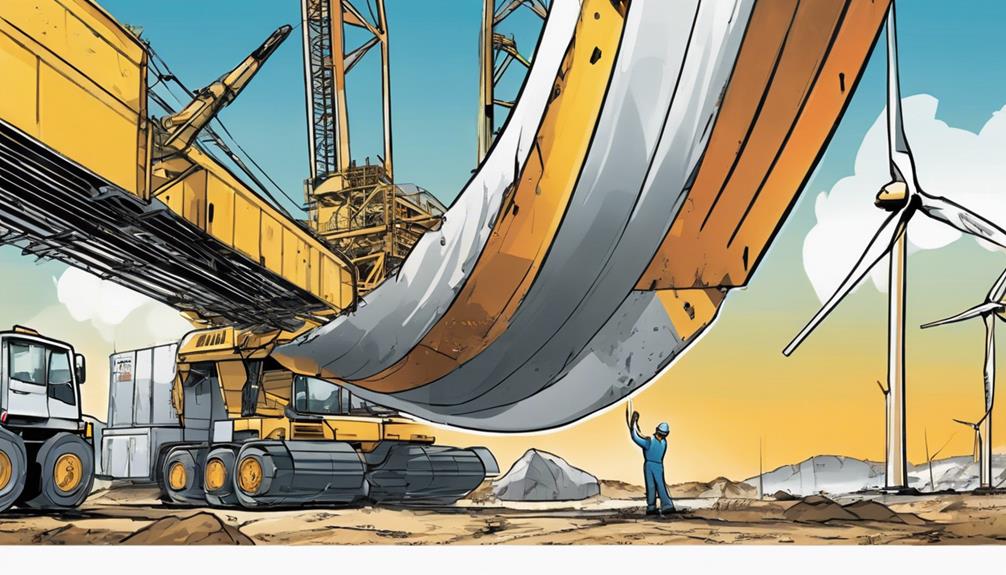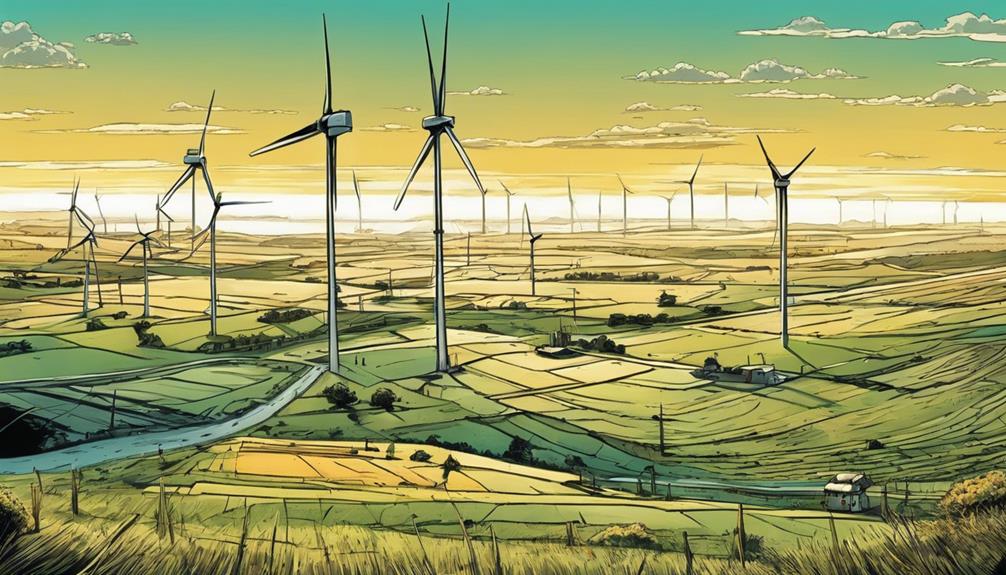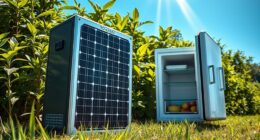If you're wondering about wind turbine blade weight, the average is about 5 tons, with some blades going up to 20 tons and offshore ones hitting around 12 tons. As you explore more, you might find it intriguing to learn about the varying weights and their impact on turbine efficiency and maintenance.
Key Takeaways
- Wind turbine blade weight varies, averaging around 5 tons.
- Some blades can weigh up to 20 tons.
- Offshore turbine blades typically weigh around 12 tons.
- Blade weight impacts transportation, installation, and operational efficiency.
- Bard VM Very Large Wind Turbine Blades can reach 26 tons.
Blade Weight Overview
When considering wind turbine blade weight, understanding the factors that influence it's essential. Wind turbine blades vary in weight, with the average blade weighing around five tons. However, some blades can weigh up to 20 tons, especially those designed for larger turbines.
For instance, the Bard VM Very Large Wind Turbine Blades can reach weights of 26 tons due to their size and unique design features. On the other hand, offshore wind turbine blades, like those used in the Rampion project, tend to be lighter, weighing around 12 tons on average.
The weight of a wind turbine blade is influenced by several factors, including the turbine's size, design, and intended application. Larger turbines typically require heavier blades to capture more wind energy efficiently. Additionally, the design of the blade, such as its length and aerodynamic features, plays a significant role in determining its weight.
Understanding these factors is essential for optimizing wind turbine performance and ensuring safe operation.
Typical Wind Turbine Blade Weight
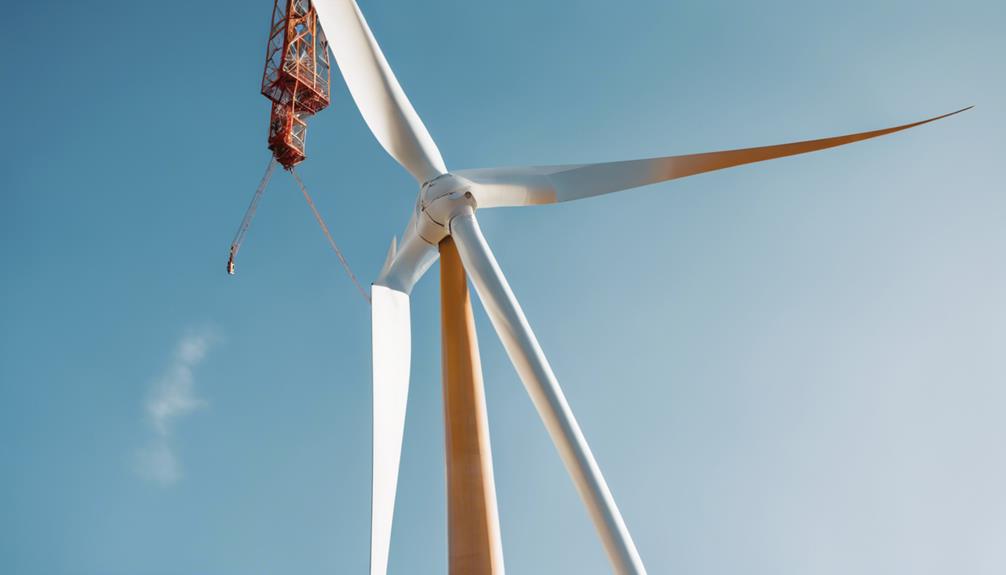
Understanding the weight of typical wind turbine blades is essential for evaluating their impact on operational efficiency and overall turbine performance. The weight of a wind turbine blade can vary based on its size and design, with a typical blade weighing around 5 tons. However, larger blades, especially those used in offshore or high-capacity turbines, can weigh up to 20 tons. This weight plays a significant role in transportation, installation, and the overall functionality of the turbine.
To provide a clearer picture, here is a comparison of the weight of typical wind turbine blades:
| Blade Type | Weight (tons) |
|---|---|
| Typical Blade | 5 |
| Larger Blade | 20 |
| Offshore Blade | 20 |
The weight of wind turbine blades directly influences factors such as operational efficiency, structural stability, and maintenance requirements. Hence, understanding the weight of these blades is vital for effectively managing logistical challenges and evaluating the environmental impacts of wind energy infrastructure.
Maximum Wind Turbine Blade Weight
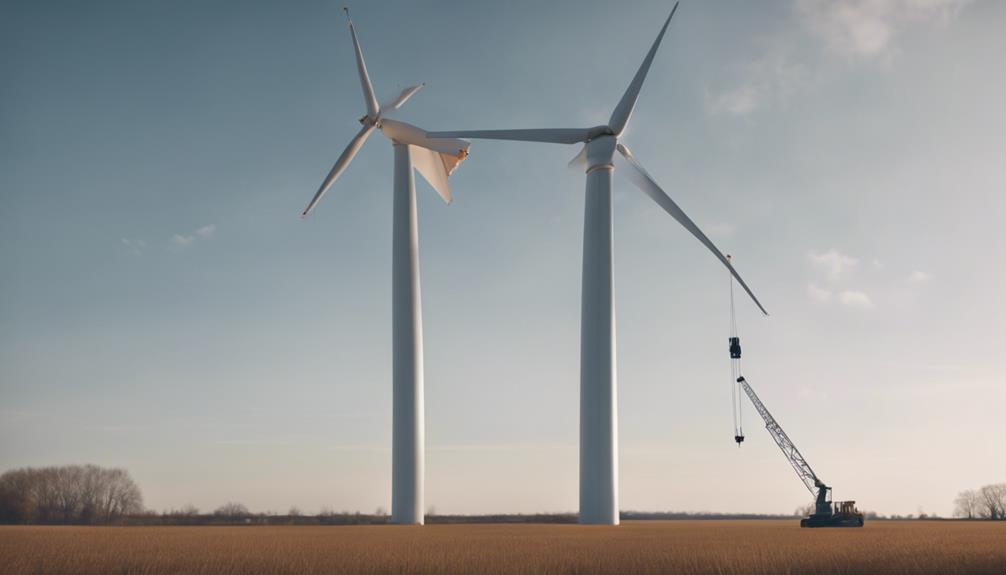
You may wonder about the weight range variability of wind turbine blades and the challenges it poses for recycling and disposal.
As wind turbine blades can reach weights of up to 20 tons, the process of handling and managing them at the end of their lifespan becomes critical.
Understanding the maximum weight potential of these blades sheds light on the importance of sustainable practices in the wind energy industry.
Weight Range Variability
The highest weight of wind turbine blades can vary significantly, with some reaching up to 20 tons, equivalent to around 40,000 pounds. This weight range variability is pivotal in the wind energy industry as it impacts the performance and safety of wind turbines. The use of composite blades, which are lighter and more durable than traditional materials, has helped in reducing blade failures due to excessive weight. These composite blades are designed to withstand the immense forces exerted by wind, ensuring best performance and longevity of the turbine system.
The weight of wind turbine blades is a crucial factor in their efficiency. Larger blades are typically heavier to capture more wind energy, leading to higher power outputs. The variability in blade weight reflects the diverse range of turbine sizes and capacities in the industry. Understanding and enhancing the weight of wind turbine blades is essential for maximizing energy production while ensuring structural integrity and safety.
Recycling and Disposal
Efforts are actively being made to find sustainable solutions for recycling wind turbine blades due to their composite materials and weight, to address the challenge of disposal. With wind turbine blades reaching weights of up to 20 tons, equivalent to the weight of about 10 cars, proper disposal is essential.
Facilities like the Casper Landfill have already accepted approximately 1,500 wind turbine blades for disposal in a single year. Fortunately, these blades aren't classified as hazardous waste, allowing them to be disposed of in specific landfills.
State and local regulations play a significant role in governing the disposal practices of construction and demolition waste, including wind turbine blades. The focus is now shifting towards developing efficient recycling methods to reduce the environmental impact of these massive blades.
Blade Recycling Challenges
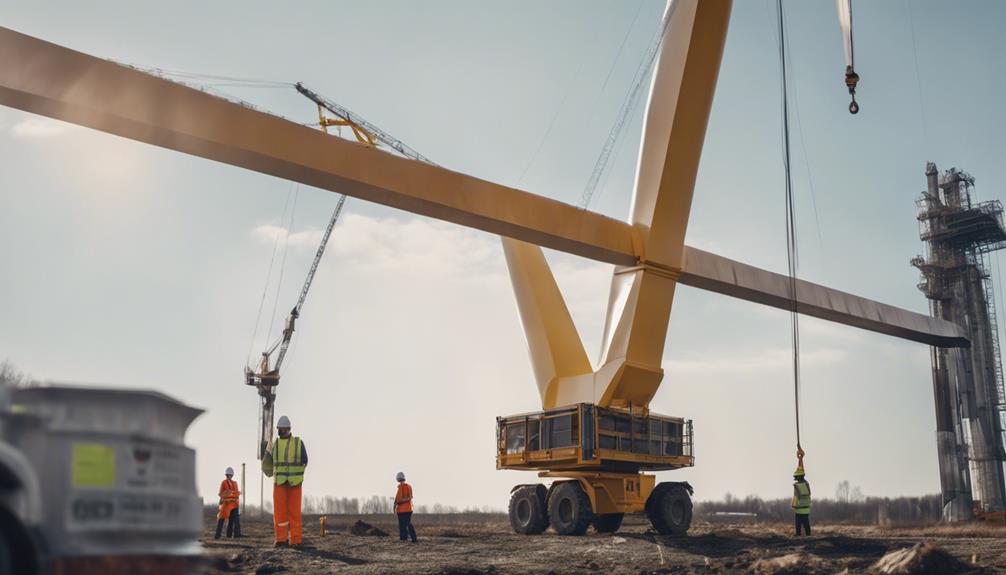
Addressing the recycling challenges of wind turbine blades requires innovative solutions due to their complex composite materials, which hinder efficient recycling practices. Wind turbine blades are made of composite materials that include fiberglass, carbon fiber, and resin, making it challenging to separate and recycle these components effectively.
Currently, the lack of scalable and cost-effective technologies for recycling these blades results in a significant portion ending up in landfills. To combat this issue, manufacturers are actively researching ways to enhance the recyclability of wind turbine blades, aiming to reduce the environmental impact caused by blade waste.
Efforts are underway to discover innovative methods to repurpose old blades and prevent them from being disposed of in landfills. As disposal practices for wind turbine blades are subject to regulations, some facilities accept them for disposal in specific landfills, emphasizing the importance of finding sustainable recycling solutions for these intricate composite materials.
Blade Thickness Considerations
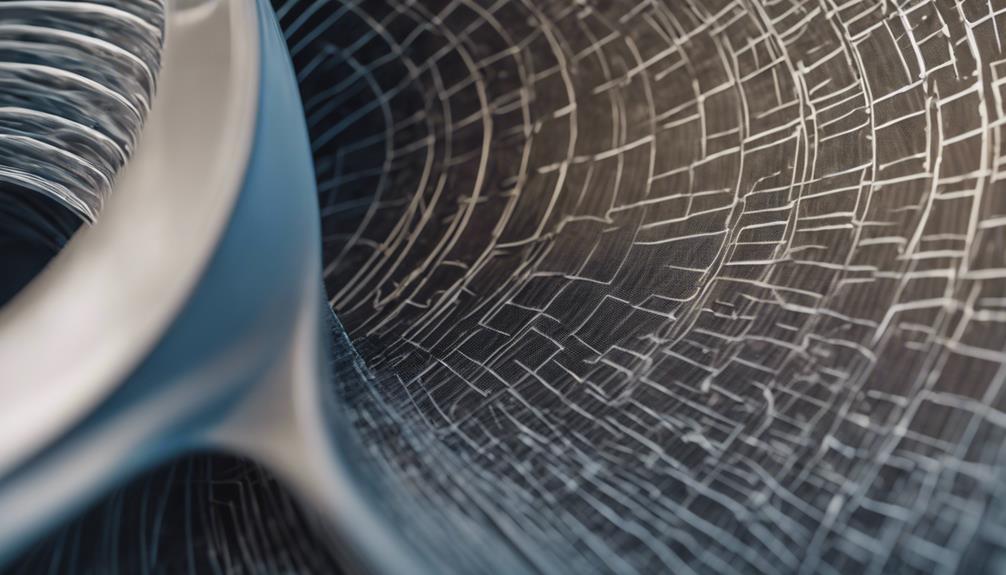
When designing wind turbine blades, considering blade thickness is essential to maximizing performance and efficiency. Blade thickness plays a pivotal role in determining the weight of the wind turbine blade. Thicker blades, ranging from 2.6mm to 20mm based on design specifications, are often preferred for larger turbines to enhance efficiency and decrease noise levels. The table below illustrates how different blade thicknesses are selected to achieve ideal aerodynamics, strength, and overall turbine efficiency.
| Blade Thickness | Typical Application | Impact on Weight |
|---|---|---|
| 2.6mm – 5mm | Small turbines | Lighter weight |
| 5mm – 10mm | Medium-sized turbines | Moderately heavier |
| 10mm – 20mm | Large turbines | Heaviest weight |
Gearbox Weight Impact
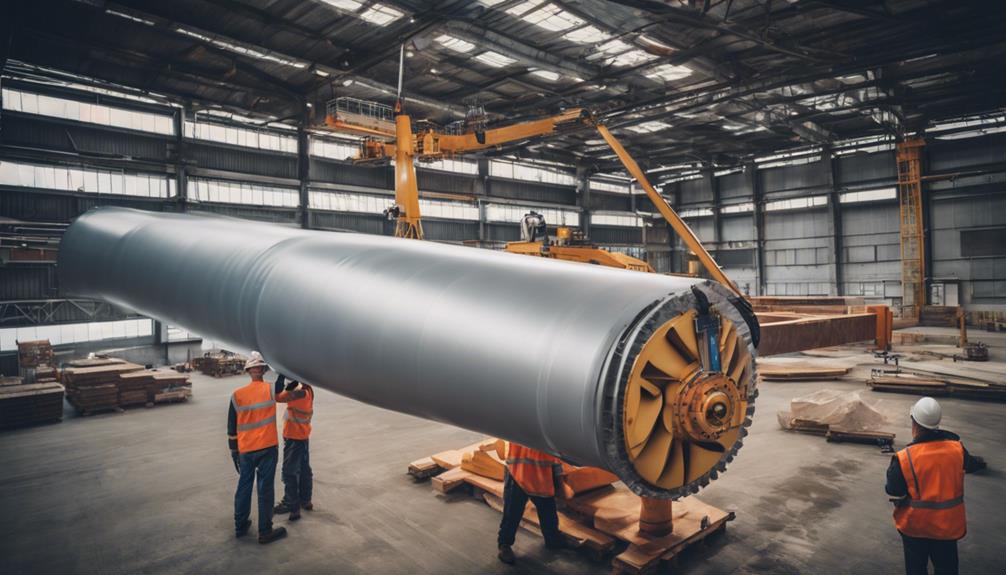
When considering the impact of gearbox weight on wind turbines, addressing the challenges of recycling these components is crucial.
Understanding the current disposal methods and industry recycling efforts can provide insights into sustainable practices within the wind energy sector.
Recycling Challenges Overview
Exploring the recycling challenges of wind turbine blades, one significant impact to ponder is the weight of the gearbox.
Wind turbine blades are mainly made of composite materials, which are notoriously difficult to recycle efficiently. Due to the lack of widely scalable and cost-effective technologies for recycling these composite materials, most retired wind turbine blades end up in landfills, exacerbating the waste management problem.
Manufacturers are actively seeking ways to enhance the recyclability and environmental sustainability of wind turbine blades. Efforts are underway to find innovative solutions for reusing these blades and diverting them from landfills.
The weight of the gearbox in wind turbine blades plays a vital role in the overall recycling process, as it adds to the logistical challenges and costs associated with recycling these massive structures. Addressing the recycling challenges posed by the gearbox weight is crucial for creating a more sustainable approach to wind turbine blade disposal.
Current Disposal Methods
Considering the impact of gearbox weight, wind turbine blade disposal methods involve specific considerations.
Wind turbine blades, classified as non-hazardous waste, can be disposed of in designated landfills following state and local regulations on construction and demolition waste. Facilities hold the discretion to accept or reject blades based on operational guidelines. In 2019, the Casper Landfill in Wyoming accepted around 1,500 wind turbine blades for disposal, highlighting the need for proper disposal methods.
While recycling poses challenges, initiatives are emerging to repurpose blades creatively. Efforts include utilizing blades in innovative ways like constructing bike shelters or incorporating them into paving materials. These endeavors aim to address the disposal issue while exploring sustainable solutions for wind turbine blade recycling.
As the industry continues to evolve, finding efficient and environmentally friendly disposal methods remains a critical focus.
Industry Recycling Efforts
Recycling wind turbine gearboxes presents significant challenges due to their substantial weight, size, and intricate components, impacting the industry's sustainability efforts. Wind turbine gearbox weight can vary from 5 to 20 tons, not only affecting the overall weight of the turbine but also posing logistical hurdles during transportation. Despite these challenges, repurposing or recycling wind turbine gearboxes is crucial for the wind energy sector's sustainability goals. Gearboxes are vital in the process of converting wind energy into electricity, directly influencing the efficiency and performance of wind turbines.
| Challenges in Recycling Wind Turbine Gearboxes | Impact on Industry Sustainability Efforts |
|---|---|
| Large weight and size | Hinders transportation and recycling processes |
| Complex components | Requires specialized recycling techniques |
Blade Cost Analysis
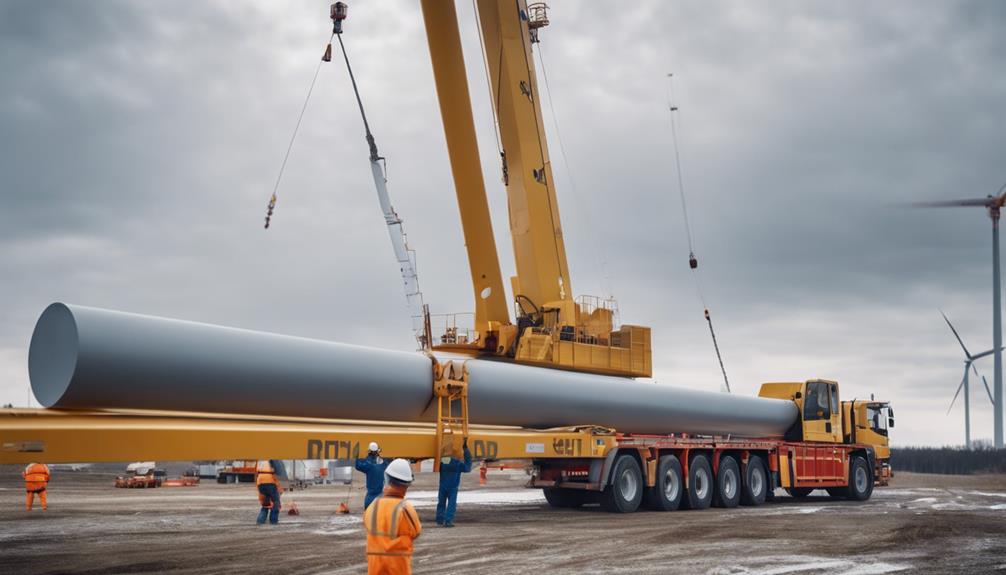
Analyzing the cost of wind turbine blades reveals a significant financial investment in renewable energy infrastructure. The average price of a wind turbine blade is approximately $154,000, making it a substantial component of wind energy systems. Despite this cost, blade failures constitute only a small fraction, around 0.54%, of all blades annually.
Wind turbine blades represent about 20% of the total wind turbine cost, emphasizing their significant financial impact on the overall system. Moreover, the weight of wind turbine blades varies among different models, with some blades reaching weights of up to 26 tons. This weight discrepancy also influences manufacturing and transportation costs associated with these massive components.
To address the disposal challenges posed by decommissioned wind turbine blades, recycling and repurposing initiatives are being explored within the industry. These efforts aim to mitigate environmental impact while finding innovative solutions for sustainable blade lifecycle management.
Total Wind Turbine Weight
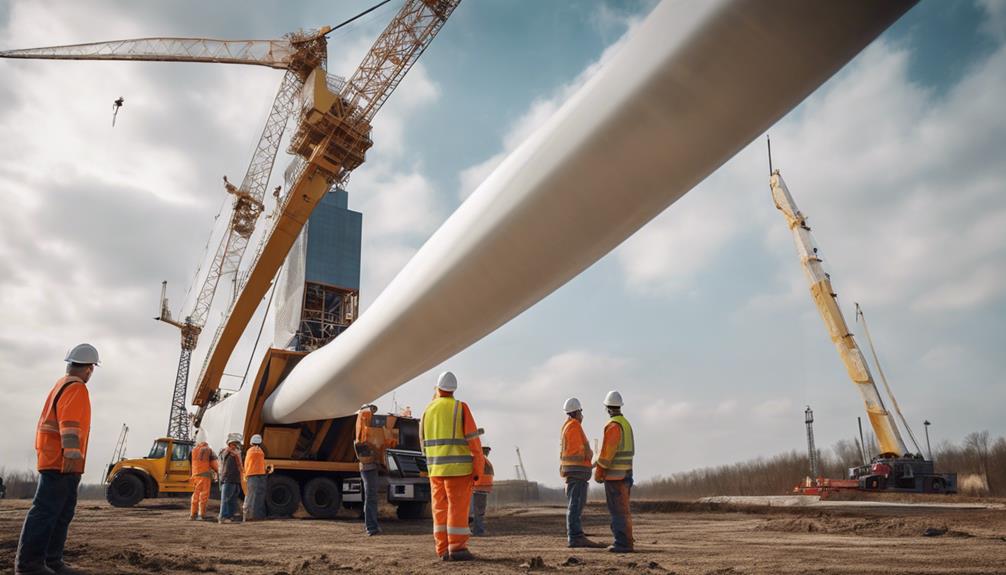
The total weight of a wind turbine, including its components and structure, plays a significant role in determining its operational efficiency and structural stability. Wind turbine weight can vary depending on the size and design of the turbine, with industrial turbines averaging around 200 tons. The weight of wind turbine components, such as the blades, is essential in ensuring the overall stability of the system. Here is a breakdown of the approximate weight distribution of a typical wind turbine:
| Component | Weight (tons) | Contribution to Total Weight |
|---|---|---|
| Tower | 80 | 40% |
| Nacelle | 50 | 25% |
| Blades | 30 | 15% |
| Foundation | 40 | 20% |
Understanding the weight distribution within a wind turbine is crucial for engineers and developers to optimize the design for efficiency and safety. The substantial weight of components like the blades underscores the need for robust materials and careful engineering in wind turbine construction.
Comparative Wind Turbine Weights
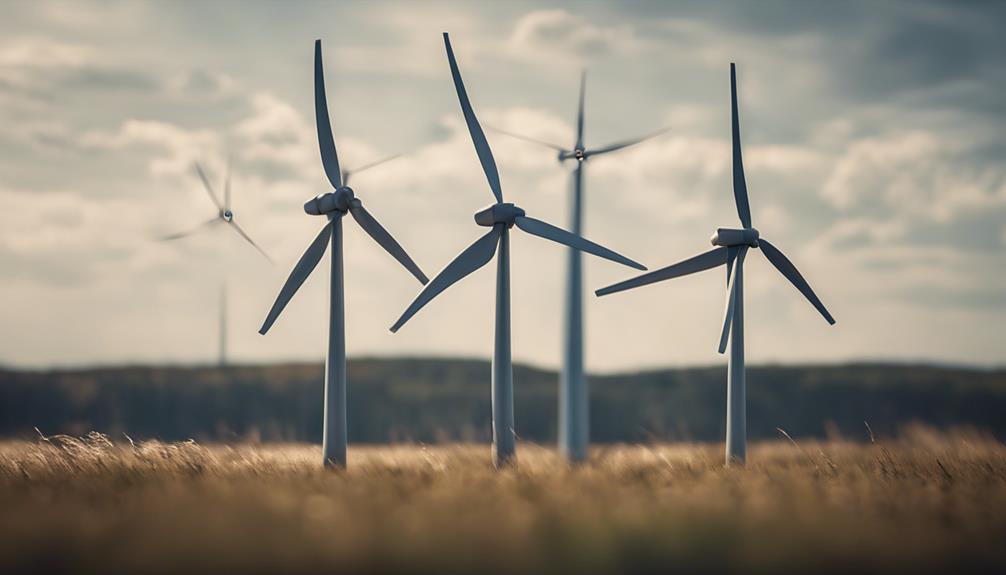
When comparing wind turbine weights, the focus shifts towards evaluating the varying weights of turbine components, particularly the rotor blades, which greatly influence the overall turbine's stability and operational efficiency.
The weight of rotor blades can range from 12 to 26 tons in industrial wind turbines, with larger offshore blades tipping the scales at the higher end. This significant weight differential plays an essential role in determining the overall weight and balance of the turbine, affecting its performance and energy generation capabilities.
Manufacturers meticulously consider the weight of rotor blades during production and installation to ensure the structural integrity and safe functionality of the turbine. Understanding the diverse weights of wind turbine components, especially rotor blades, is crucial for effectively managing transportation, installation, and decommissioning processes within the wind energy sector.
Summary and Key Findings
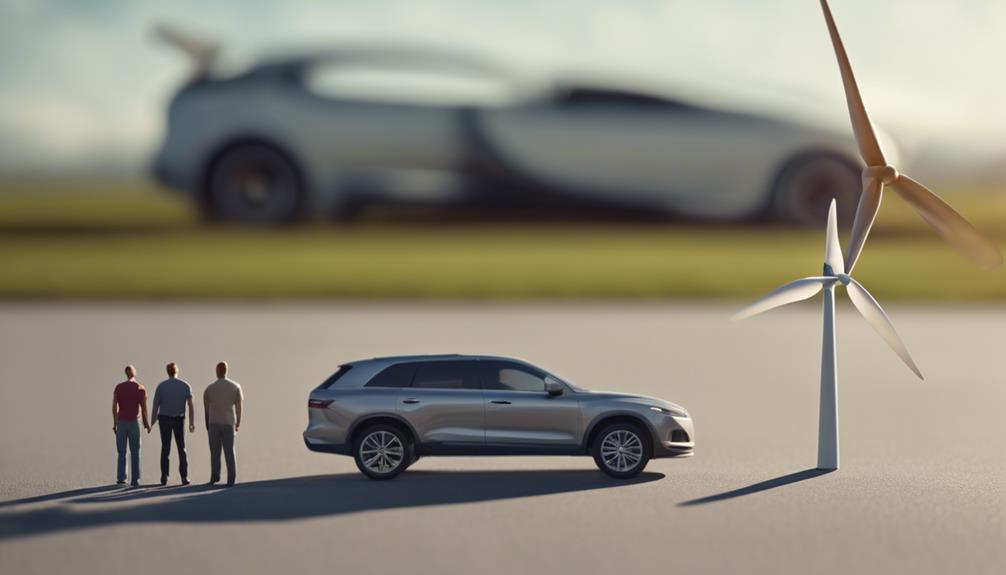
Wind turbine blade weight is an important factor influencing the efficiency and sustainability of wind energy operations. The size and weight of wind turbine blades are substantial, with an average weight of around five tons and some blades weighing up to 20 tons. These blades can reach the size of a football field, contributing significantly to their weight.
While wind turbine blades are necessary for electricity generation, their disposal poses challenges due to their weight. Innovative repurposing initiatives have been developed, such as creating bike shelters and paving materials from old blades. Despite these efforts, the scale of wind turbine blade waste remains a notable concern, with projections indicating over 43 million tons of waste generated by 2050.
Finding sustainable solutions for handling and recycling these massive blades is crucial for the long-term viability of wind energy operations.
Frequently Asked Questions
How Many Tons Is a Windmill Blade?
When you're curious about the weight of a windmill blade, it should be mentioned that these blades can range from 5 to 20 tons. Offshore turbines tend to have heavier blades, with some like Bard VM's reaching up to 26 tons.
How Fast Is the Tip of a Wind Turbine Blade Mph?
The tip of a wind turbine blade can reach speeds of up to 180 mph during operation. Understanding this speed is essential for maximizing energy production. You should optimize blade tip speed to enhance wind energy capture efficiently.
What Is the Average Cost of a Wind Turbine Blade?
The average cost of a wind turbine blade is around $154,000. This substantial expense impacts the overall cost of wind turbines. Understanding the financial investment required for blades is essential for evaluating wind energy projects.
How Much Does One Blade on a Wind Turbine Cost?
You can expect to pay around $154,000 for a single wind turbine blade. This cost is a significant factor in the total expenses of wind turbine projects. Blade failures account for about 0.54% annually.
Does the Length of a Wind Turbine Blade Affect its Weight?
Yes, the length of a wind turbine blade does affect its weight. Generally, the longer the blade, the heavier it is. This is due to the need for stronger materials to support and maintain the structural integrity of the blade. As a result, the average length wind turbine blade has a significant impact on its overall weight.
Is the Weight of a Wind Turbine Blade Related to the Energy Produced by the Gearbox?
The weight of a wind turbine blade does not directly affect the energy in wind turbine gearbox. However, lighter blades may allow for faster rotation, generating more energy. The gearbox then converts this energy for efficient use. It’s all interconnected for optimal energy production.
What is the average weight of a wind turbine blade?
The average wind turbine blade weight can vary depending on the specific model and size. However, a typical range for the weight of a single blade can be between 5,000 to 20,000 pounds. The weight is necessary to ensure stability and efficiency in harnessing wind energy.
Conclusion
In the world of wind energy, the weight of a turbine blade is vital. While the typical weight of a blade may seem manageable, the maximum weight can be staggering.
As we ponder the challenges of blade recycling and the significance of blade thickness, it becomes apparent that the cost and weight of a wind turbine are significant factors to take into account.
Ultimately, the weight of a wind turbine blade holds immense power and potential for the future of renewable energy.
